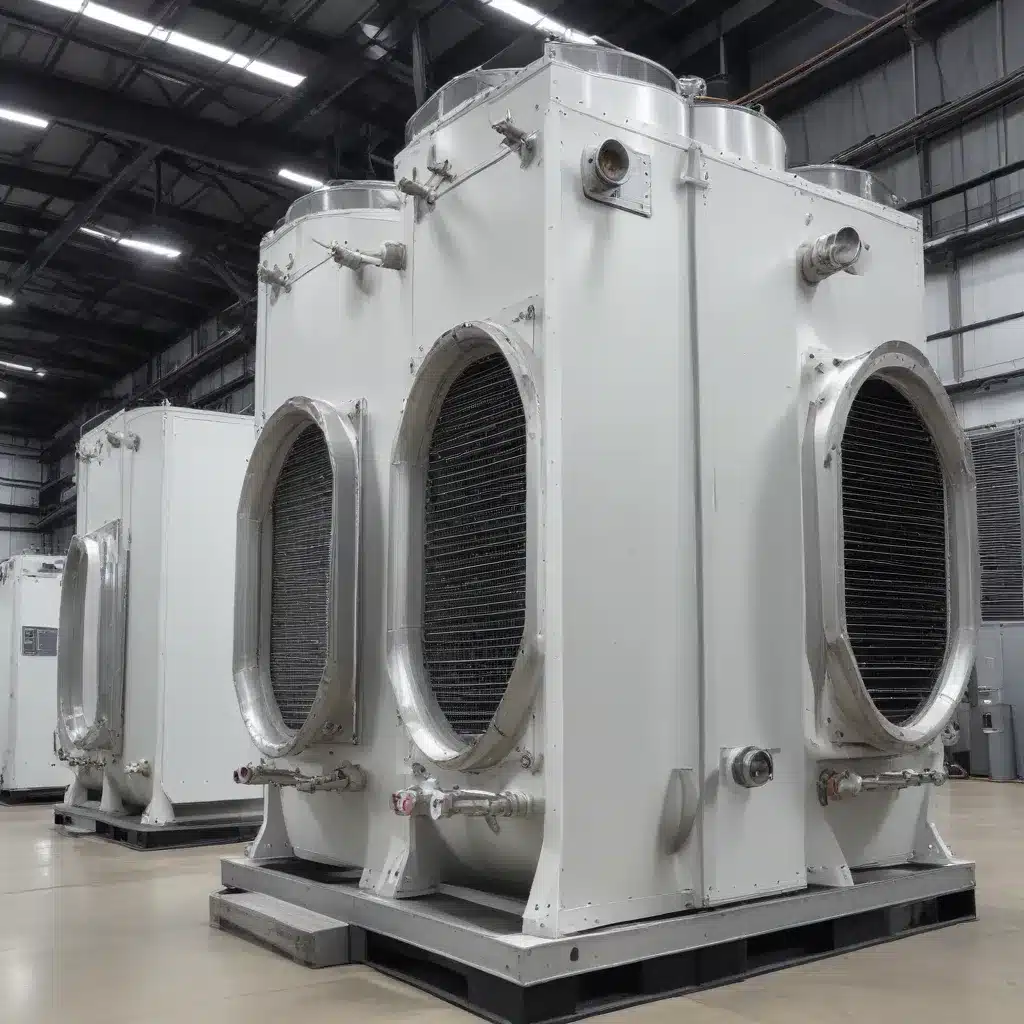
As a seasoned expert in air-cooled heat exchangers, I’m excited to share insights into their remarkable performance and versatility, particularly in the realm of cryogenic applications. Air-cooled heat exchangers have long been recognized as workhorses in various industries, but their exceptional capabilities in managing extreme temperatures make them indispensable for cutting-edge cryogenic technologies and systems.
The Unique Challenges of Cryogenic Thermal Management
Maintaining precise temperature control in cryogenic environments is a delicate balance, with even minor fluctuations potentially disrupting the sensitive operation of specialized equipment and instruments. This challenge is amplified in the space industry, where payload size, weight, and power constraints demand innovative thermal management solutions.
Conventional cooling methods, such as liquid-based systems, can be cumbersome, energy-intensive, and prone to reliability issues in the harsh space environment. This is where air-cooled heat exchangers shine, offering a compact, robust, and highly efficient alternative that is ideally suited for cryogenic applications.
The Thermal Superiority of Air-Cooled Heat Exchangers
Air-cooled heat exchangers leverage the inherent thermal properties of air to provide exceptional cooling performance, even in the most demanding cryogenic scenarios. Their unique design and engineering principles allow them to excel in several key areas:
Unparalleled Thermal Efficiency
The corrugated plate design and high-temperature brazing process of air-cooled heat exchangers create an intricate network of channels that maximize heat transfer. This ingenious configuration enables them to achieve industry-leading thermal efficiencies, often surpassing their liquid-based counterparts.
Exceptional Cryogenic Capabilities
The robust construction of air-cooled heat exchangers, with their ability to withstand high pressures and temperatures, makes them ideally suited for cryogenic applications. They can operate reliably at temperatures as low as -200°C, ensuring precise thermal control for sensitive instruments and components.
Compact and Lightweight Design
The compact size and lightweight nature of air-cooled heat exchangers are particularly advantageous in space-constrained environments, such as small satellites and CubeSats. Their minimal footprint and low mass enable designers to optimize payload allocation and integrate them seamlessly into complex systems.
Reduced Maintenance Requirements
Unlike liquid-based cooling systems, air-cooled heat exchangers have fewer moving parts and are less prone to issues like leaks, corrosion, and fouling. This translates to reduced maintenance requirements and enhanced reliability, which is crucial for mission-critical cryogenic applications.
Innovative Applications of Air-Cooled Heat Exchangers in Cryogenic Systems
The versatility of air-cooled heat exchangers has led to their adoption in a wide range of cryogenic applications, each showcasing their unique thermal management capabilities.
Cryogenic Instrumentation Cooling
High-precision scientific instruments, such as infrared sensors and spectrometers, often require cryogenic cooling to achieve optimal performance. Air-cooled heat exchangers provide the necessary thermal management, allowing these delicate instruments to function with unparalleled accuracy and sensitivity.
Cryogenic Propulsion Systems
In the space industry, air-cooled heat exchangers play a vital role in the thermal management of cryogenic propulsion systems. They help maintain the precise temperatures required for the efficient operation of liquid hydrogen and liquid oxygen-based rocket engines, ensuring reliable and safe spacecraft propulsion.
Cryogenic Storage and Transportation
The transportation and storage of cryogenic fluids, such as liquid nitrogen and liquid helium, present unique thermal challenges. Air-cooled heat exchangers are employed to manage the boil-off and maintain the cryogenic temperatures, enabling the safe and efficient handling of these critical substances.
Cryogenic Superconducting Applications
Superconducting technologies, which rely on cryogenic temperatures to function, benefit from the thermal control provided by air-cooled heat exchangers. These include advanced communication systems, medical imaging equipment, and research-grade particle accelerators.
Optimizing Air-Cooled Heat Exchanger Performance in Cryogenic Applications
Achieving the full potential of air-cooled heat exchangers in cryogenic applications requires a comprehensive understanding of design, engineering, and maintenance best practices. As an industry expert, I can share the following insights:
Customized Design Considerations
Cryogenic applications often demand tailored heat exchanger designs to meet specific temperature requirements, flow rates, and space constraints. Leveraging advanced computational fluid dynamics (CFD) simulations and extensive testing, heat exchanger manufacturers can optimize the plate geometry, material selection, and overall configuration to deliver unparalleled thermal performance.
Innovative Manufacturing Techniques
The use of advanced manufacturing methods, such as additive manufacturing and ultrasonic welding, has enabled the creation of air-cooled heat exchangers with even greater efficiency and reliability. These techniques allow for the precise integration of features like embedded fluid channels, optimized heat transfer surfaces, and enhanced structural integrity.
Proactive Maintenance and Monitoring
To ensure the long-term reliability of air-cooled heat exchangers in cryogenic systems, a proactive maintenance approach is crucial. This includes regular inspections, periodic cleaning, and the implementation of advanced monitoring technologies to detect any potential issues before they escalate.
Collaboration with Industry Experts
Partnering with experienced air-cooled heat exchanger manufacturers and thermal engineering specialists can provide invaluable insights and support for the successful integration of these solutions in cryogenic applications. These industry experts can assist with everything from the initial design phase to ongoing maintenance and optimization, ensuring seamless performance.
Conclusion: Unlocking the Cryogenic Potential of Air-Cooled Heat Exchangers
As the demand for advanced cryogenic technologies continues to grow, the role of air-cooled heat exchangers becomes increasingly crucial. Their exceptional thermal efficiency, cryogenic capabilities, and reliable performance make them an indispensable component in a wide range of mission-critical applications, from space exploration to medical research.
By leveraging the expertise and insights shared in this article, engineers, designers, and systems integrators can unlock the full potential of air-cooled heat exchangers in cryogenic applications, delivering innovative solutions that push the boundaries of what’s possible. For more information or to explore our comprehensive range of air-cooled heat exchanger products and services, please visit https://www.aircooledheatexchangers.net/.

